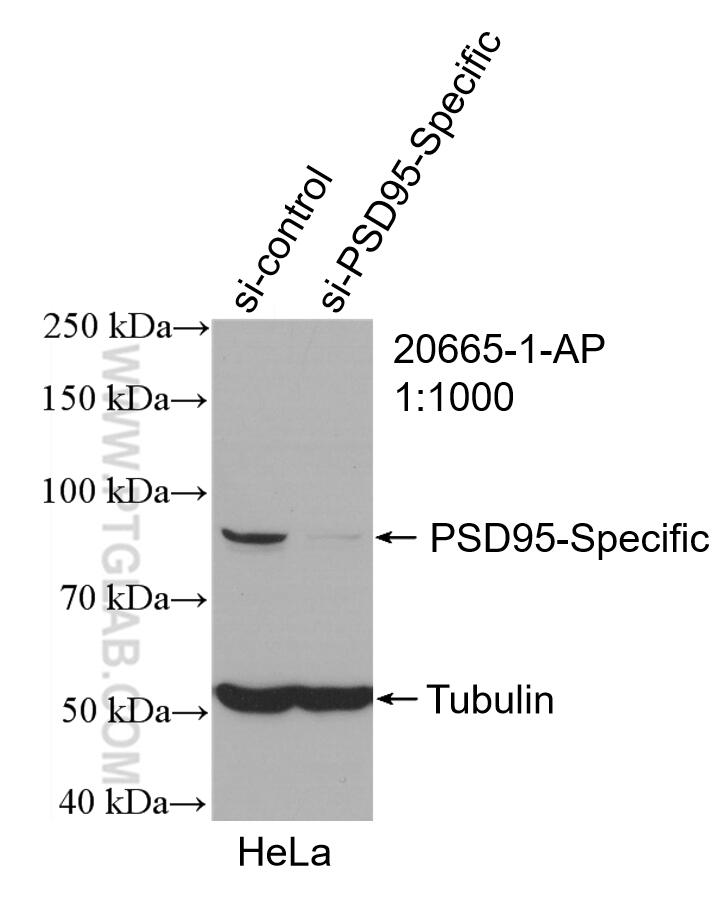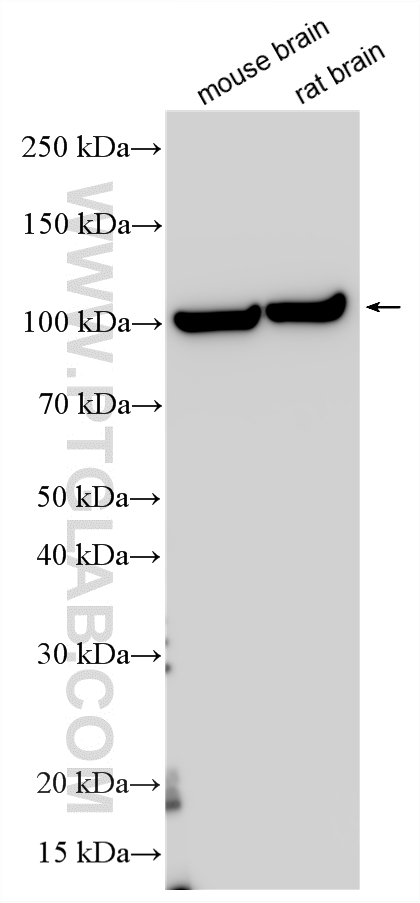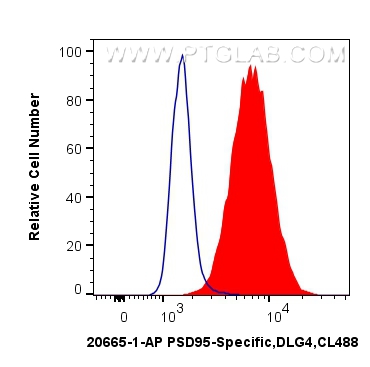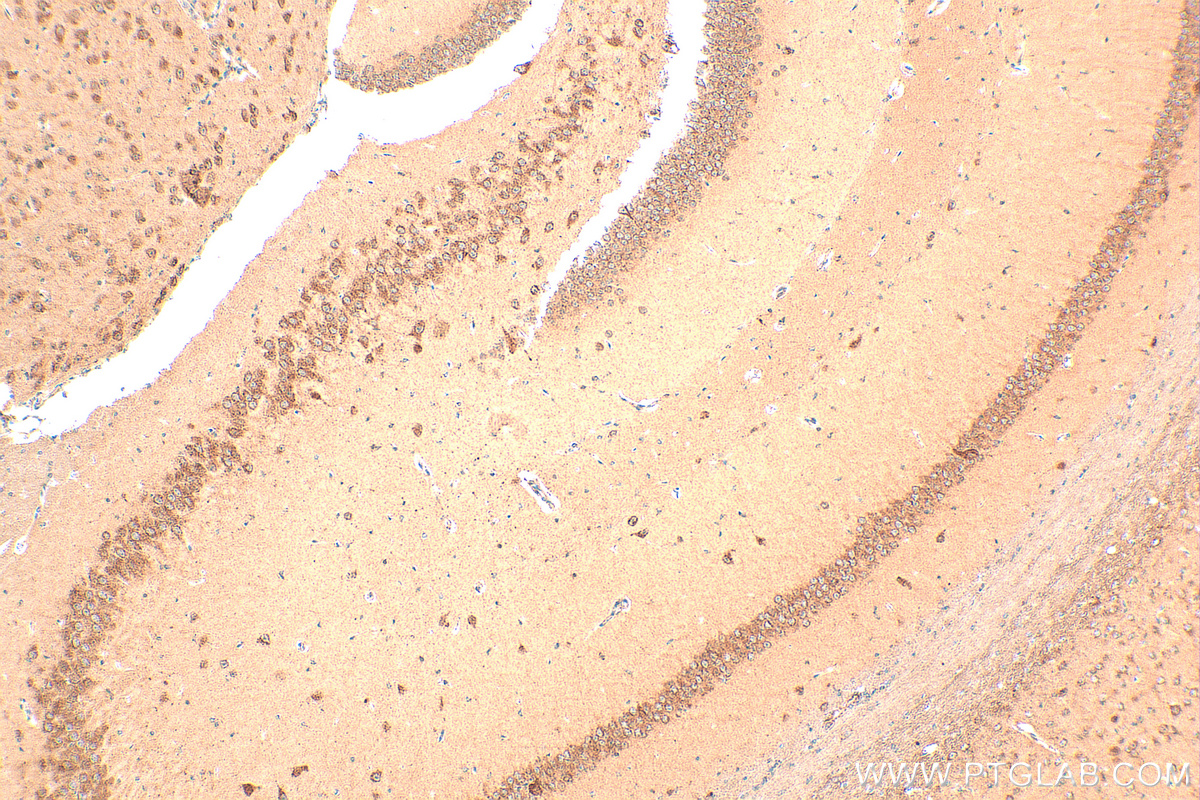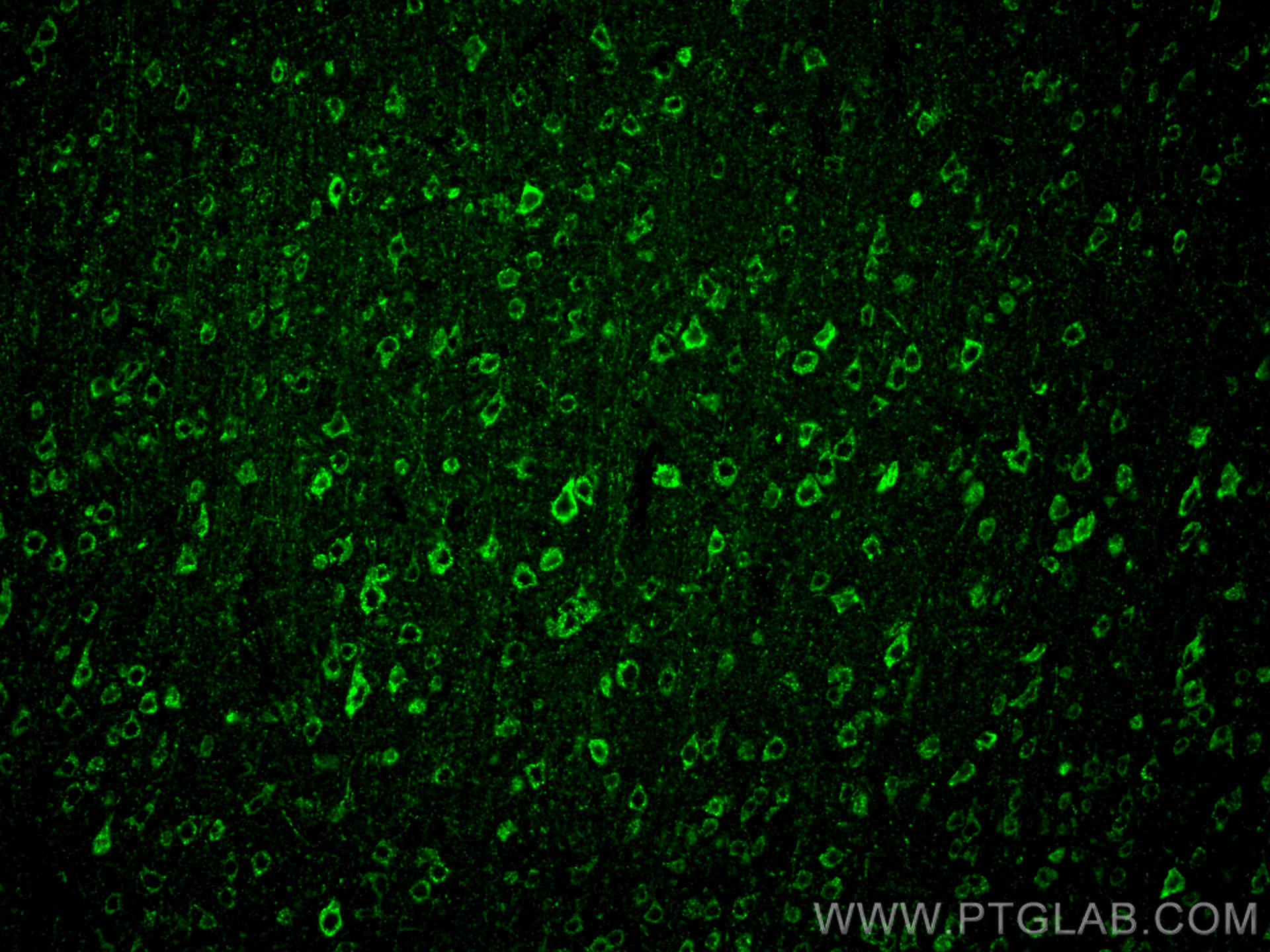验证数据展示
经过测试的应用
| Positive WB detected in | mouse brain tissue, HeLa cells, rat brain tissue |
| Positive IHC detected in | mouse brain tissue Note: suggested antigen retrieval with TE buffer pH 9.0; (*) Alternatively, antigen retrieval may be performed with citrate buffer pH 6.0 |
| Positive IF-P detected in | mouse brain tissue |
| Positive FC (Intra) detected in | Neuro-2a cells |
推荐稀释比
| 应用 | 推荐稀释比 |
|---|---|
| Western Blot (WB) | WB : 1:5000-1:50000 |
| Immunohistochemistry (IHC) | IHC : 1:200-1:800 |
| Immunofluorescence (IF)-P | IF-P : 1:200-1:800 |
| Flow Cytometry (FC) (INTRA) | FC (INTRA) : 0.40 ug per 10^6 cells in a 100 µl suspension |
| It is recommended that this reagent should be titrated in each testing system to obtain optimal results. | |
| Sample-dependent, Check data in validation data gallery. | |
产品信息
20665-1-AP targets PSD95-Specific in WB, IHC, IF-P, FC (Intra), CoIP, ELISA applications and shows reactivity with human, mouse, rat samples.
| 经测试应用 | WB, IHC, IF-P, FC (Intra), ELISA Application Description |
| 文献引用应用 | WB, IHC, IF, CoIP |
| 经测试反应性 | human, mouse, rat |
| 文献引用反应性 | human, mouse, rat, chicken, zebrafish, hamster |
| 免疫原 |
Peptide 种属同源性预测 |
| 宿主/亚型 | Rabbit / IgG |
| 抗体类别 | Polyclonal |
| 产品类型 | Antibody |
| 全称 | discs, large homolog 4 (Drosophila) |
| 别名 | PSD95-Specific,DLG4, DLG4, PSD-95, psd95/dlg4, DLG 4 |
| 计算分子量 | 85 kDa |
| 观测分子量 | 90-95 kDa |
| GenBank蛋白编号 | NM_001365 |
| 基因名称 | PSD95 |
| Gene ID (NCBI) | 1742 |
| RRID | AB_2687961 |
| 偶联类型 | Unconjugated |
| 形式 | Liquid |
| 纯化方式 | Antigen affinity purification |
| UNIPROT ID | P78352 |
| 储存缓冲液 | PBS with 0.02% sodium azide and 50% glycerol, pH 7.3. |
| 储存条件 | Store at -20°C. Stable for one year after shipment. Aliquoting is unnecessary for -20oC storage. |
背景介绍
PSD-95 (postsynaptic density protein 95) also known as SAP-90 (synapse-associated protein 90) is a protein that in humans is encoded by the DLG4 (disks large homolog 4) gene. PSD-95 is a scaffolding protein of the MAGUK protein family, and engages in several vital protein-protein interactions in the brain with its PDZ domains. It has been suggested that PSD-95 is composed of two supramodules, one of which is the PDZ1-2 tandem domain. It plays an important role in synaptic plasticity and the stabilization of synaptic changes during long-term potentiation. Observed MW of PSD95 is 90-95 kDa due to phosphorylation (PMID: 20682303).
实验方案
| Product Specific Protocols | |
|---|---|
| IF protocol for PSD95-Specific antibody 20665-1-AP | Download protocol |
| IHC protocol for PSD95-Specific antibody 20665-1-AP | Download protocol |
| WB protocol for PSD95-Specific antibody 20665-1-AP | Download protocol |
| Standard Protocols | |
|---|---|
| Click here to view our Standard Protocols |
发表文章
| Species | Application | Title |
|---|---|---|
Nat Neurosci Foxp2 controls synaptic wiring of corticostriatal circuits and vocal communication by opposing Mef2c. | ||
Nat Commun Reliability of high-quantity human brain organoids for modeling microcephaly, glioma invasion and drug screening | ||
Neuron Astrocytic ApoE reprograms neuronal cholesterol metabolism and histone-acetylation-mediated memory. | ||
Neuron Selective removal of astrocytic APOE4 strongly protects against tau-mediated neurodegeneration and decreases synaptic phagocytosis by microglia. | ||
Sci Adv Microglial Ffar4 deficiency promotes cognitive impairment in the context of metabolic syndrome | ||
Sci Adv Loss of schizophrenia-related miR-501-3p in mice impairs sociability and memory by enhancing mGluR5-mediated glutamatergic transmission |

